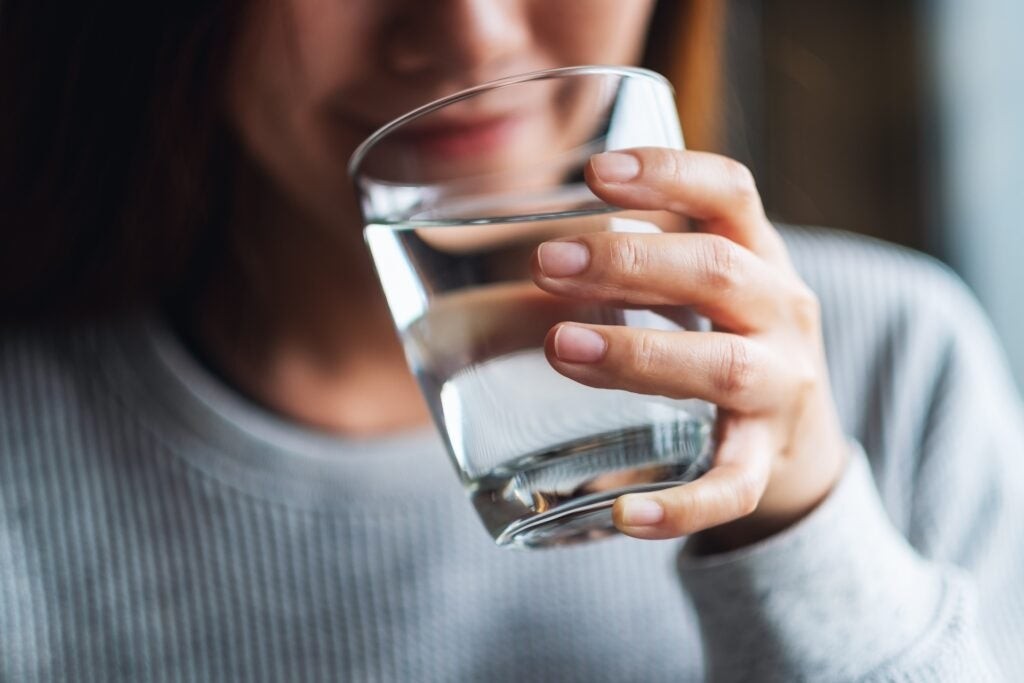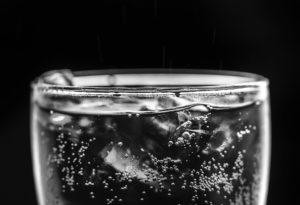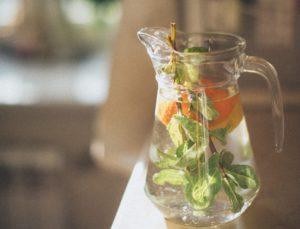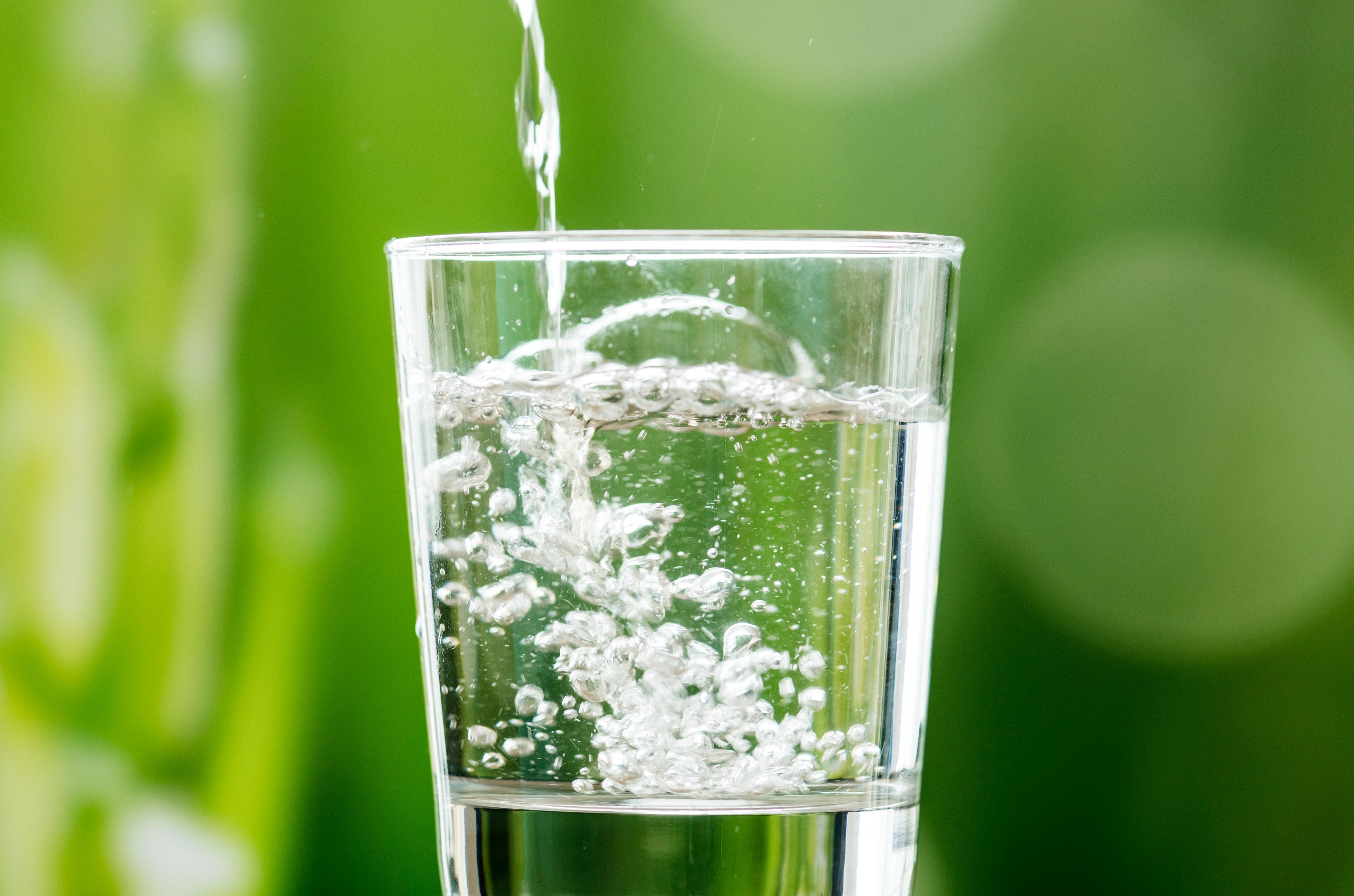When it comes to healthy beverage choices, water consistently ranks as the champion, especially for those fortunate enough to have access to clean and safe drinking water. In a world brimming with sugary drinks and calorie-laden options, water stands out as a zero-calorie, readily available source of hydration, often just a tap away. But beyond simply quenching thirst, water plays a vital role in maintaining overall health and bodily functions.
Water is fundamental to countless bodily processes. It’s essential for replenishing fluids lost throughout the day through metabolism, respiration, perspiration, and waste elimination. Staying adequately hydrated with water helps regulate body temperature, ensuring you don’t overheat. It acts as a lubricant for joints and tissues, contributes to maintaining healthy and supple skin, and is indispensable for efficient digestion. For anyone seeking a calorie-free beverage that effectively hydrates and revitalizes, water is the undeniable top choice.
Decoding Your Daily Water Needs: How Much is Enough?
Water is not just a refreshing drink; it’s an essential nutrient that our bodies require at every stage of life. Optimal hydration is a cornerstone of good health, considering that water comprises approximately 60% of an adult’s body weight. Our bodies have a built-in mechanism to signal when we need water – thirst. This crucial sensation alerts us when our fluid levels are running low. Furthermore, drinking fluids during meals is a common practice that aids in the digestive process. However, sometimes our fluid intake is dictated not by these natural cues but by preconceived notions, such as the widely circulated advice to drink “8 glasses a day.” While this is a popular guideline, it’s important to understand that it might not be the ideal amount for everyone.
General Recommendations for Daily Water Intake
Instead of adhering strictly to the “8 glasses a day” rule, consider these broader guidelines. The National Academy of Medicine provides recommendations for adequate daily fluid intake, suggesting approximately 13 cups for men and 9 cups for women. It’s important to note that one cup is equivalent to 8 ounces. Therefore, this translates to about 104 ounces for men and 72 ounces for women. These figures serve as general guidance rather than strict targets. Individual water requirements can fluctuate significantly from person to person and even from day to day. Factors such as physical activity levels, climate, and overall health play a significant role in determining how much water each person needs. For instance, individuals who are very active or live in hot climates will likely need to consume more fluids to compensate for increased water loss through sweat. Conversely, people with smaller body sizes may require slightly less.
It’s crucial to recognize situations that may necessitate increased fluid intake. Conditions like fever, engaging in physical exercise, exposure to extreme temperatures (both hot and cold), and fluid loss due to vomiting or diarrhea all elevate the body’s need for water.
A simple yet effective way to gauge your hydration status is by observing the volume and color of your urine. Generally, darker urine indicates higher concentration, meaning it contains less water, suggesting potential dehydration. Conversely, well-hydrated individuals typically have pale yellow or straw-colored urine. However, it’s worth noting that certain foods, medications, and vitamin supplements can also influence urine color, so it’s not the sole determinant. Reduced urine volume, especially if accompanied by darker color, can be a sign of dehydration.
Alcohol consumption can also impact hydration levels. Alcohol inhibits the anti-diuretic hormone, which is responsible for signaling the kidneys to conserve water by reducing urination and reabsorbing water back into the body. When this hormone is suppressed, the body eliminates water more readily. Consuming more than a couple of alcoholic drinks in a short period, particularly on an empty stomach, can heighten the risk of dehydration. To mitigate this, it’s advisable to consume alcohol with food and alternate with sips of water.
While caffeine has historically been linked to dehydration due to its potential diuretic effects, current research offers a more nuanced perspective. Studies suggest that consuming more than 180 mg of caffeine daily (roughly equivalent to two cups of brewed coffee) might lead to a short-term increase in urination for some individuals, but it doesn’t necessarily result in overall dehydration. Therefore, caffeinated beverages like coffee and tea can still contribute to your total daily fluid intake.
Keep in mind that beverages are not the only source of water intake. Approximately 20% of our daily water intake comes from the foods we consume, particularly water-rich options like lettuce, leafy greens, cucumbers, bell peppers, summer squash, celery, berries, and melons. Incorporating these foods into your diet can contribute significantly to your overall hydration.
For a clearer understanding of daily water intake recommendations based on age group, refer to the following chart adapted from the National Academy of Medicine guidelines:
| Age Group | Daily Adequate Intake | Ounces |
|---|---|---|
| 1-3 years | 4 cups | 32 ounces |
| 4-8 years | 5 cups | 40 ounces |
| 9-13 years | 7-8 cups | 56-64 ounces |
| 14-18 years | 8-11 cups | 64-88 ounces |
| Men, 19 and older | 13 cups | 104 ounces |
| Women, 19 and older | 9 cups | 72 ounces |
| Pregnant women | 10 cups | 80 ounces |
| Breastfeeding women | 13 cups | 104 ounces |
Is Thirst a Reliable Indicator of Hydration? Preventing Dehydration
Our bodies are intelligently designed to signal thirst when fluid levels decrease. Thirst, the innate desire to drink, is triggered by both physiological and behavioral cues. Behavioral prompts can be as simple as water temperature. Interestingly, studies suggest that people tend to consume more water when it’s served at room temperature, even though they may perceive colder drinks as more palatable. Social settings can also influence our drinking habits, often leading us to drink (and eat) more.
However, as we age, the body’s ability to regulate fluid intake and the sensation of thirst can diminish. Research indicates that both of these mechanisms become less effective in older adults. A Cochrane review highlighted that common indicators of dehydration in older adults, such as urine color and volume or feeling thirsty, are not always reliable and shouldn’t be used as the sole measures. Certain medical conditions that affect cognitive function, like stroke or dementia, can also impair thirst sensation. Furthermore, some individuals may intentionally limit fluid intake due to issues like incontinence or mobility challenges in reaching a bathroom. Beyond these specific situations, studies have shown that athletes, individuals who are ill, and infants might not always have an accurate sense of thirst to adequately meet their fluid needs. Even mild dehydration can lead to undesirable symptoms. Therefore, individuals who cannot fully rely on thirst or other typical indicators may benefit from adopting proactive hydration strategies. One practical approach is to aim to fill a 20-ounce water bottle multiple times daily and sip throughout the day. Another easy method is to make it a habit to drink a large glass of water with each meal and snack.
Recognizing the Symptoms of Dehydration:
Dehydration can manifest even with a water deficit as small as 2% of body weight. Be aware of these common symptoms:
- Fatigue and decreased energy levels
- Cognitive impairments such as confusion or short-term memory loss
- Mood alterations, including increased irritability or feelings of depression
Long-Term Health Risks Associated with Dehydration:
Chronic dehydration can elevate the risk of developing several medical conditions, including:
- Urinary tract infections (UTIs)
- Kidney stones
- Gallstones
- Constipation
The Alkaline Water Trend: Is It Worth the Hype?
Alkaline water has gained popularity, fueled by celebrity endorsements and claims ranging from weight loss to cancer cures. The underlying theory mirrors the alkaline diet trend, suggesting that alkaline water can counteract the supposed negative effects of acid-producing foods like meat, sugar, and certain grains.
The pH scale, ranging from 0 to 14, measures acidity and alkalinity. A higher pH indicates alkalinity, while a lower pH signifies acidity. The human body tightly regulates blood pH around 7.4, as significant deviations from this narrow range can lead to adverse health consequences and even be life-threatening. However, dietary intake alone rarely causes such extreme pH imbalances. These conditions are typically associated with underlying medical issues like uncontrolled diabetes, kidney disease, chronic lung disease, or alcohol abuse.
Alkaline water generally has a pH of 8-9, higher than tap water’s approximate pH of 7, due to a greater concentration of minerals or salts. Some natural water sources are alkaline due to mineral absorption from rocks. However, most commercially available alkaline water is produced using ionizers, which purportedly separate alkaline components and filter out acidic components to raise the pH. Some people also create alkaline water by adding substances like baking soda to regular water.
However, the scientific evidence supporting the acid-alkaline theory, also known as the acid-ash theory, remains inconclusive. This theory posits that consuming large quantities of specific foods can slightly lower blood pH, particularly without sufficient intake of alkaline-promoting foods like fruits, vegetables, and legumes. Controlled clinical trials have not demonstrated that diet alone can significantly alter blood pH in healthy individuals. Moreover, a direct link between blood pH in the low-normal range and chronic diseases in humans has not been definitively established.
Bottom Line on Alkaline Water: If alkaline water encourages you to drink more water, then it might be beneficial for you. However, it’s highly likely that plain regular water will provide similar hydration benefits – improved energy, mood, and digestive health – simply by keeping you well-hydrated.
Overhydration: Is It Possible to Drink Too Much Water?
While it’s crucial to stay hydrated, it’s also possible, though rare, to overdo it. There’s no established Tolerable Upper Intake Level for water because healthy kidneys can typically manage and excrete excess water through urine or sweat. However, in certain circumstances, a condition known as water toxicity can occur. This happens when an excessive amount of water is consumed in a short timeframe, overwhelming the kidneys’ capacity to eliminate it quickly enough. This leads to hyponatremia, a potentially dangerous condition characterized by abnormally low sodium levels in the blood due to dilution from excess water. Hyponatremia can manifest with symptoms like confusion, nausea, seizures, and muscle spasms. It’s most commonly observed in individuals with underlying illnesses that impair kidney function or in situations of extreme heat stress or prolonged strenuous exercise where the body struggles to excrete water as rapidly as it’s consumed. Endurance athletes like triathletes and marathon runners are at a higher risk because they tend to drink large volumes of water while simultaneously losing sodium through sweat. Women and children may also be more susceptible to hyponatremia due to their smaller body size.
Enhancing Your Water Intake: Fun and Flavorful Options
Water is an excellent choice – calorie-free and sugar-free. However, for those accustomed to sugary beverages, plain water might initially seem bland. To boost your water consumption without sacrificing flavor or to simply add variety to your daily hydration routine, explore these refreshing water-based beverage ideas:
Infused Water Recipes
Instead of buying expensive flavored waters from the store, you can easily create your own at home. Simply add any of these ingredients to a glass or pitcher of cold water:
- Sliced citrus fruits or zest (lemon, lime, orange, grapefruit)
- Freshly crushed mint leaves
- Peeled, sliced fresh ginger or cucumber slices
- Crushed berries
Sparkling Water with a Juice Splash
While sparkling juices can be deceptively high in calories, often comparable to sugary sodas, you can make a healthier homemade version. Combine 12 ounces of sparkling water with just an ounce or two of your favorite juice. For extra flavor, add citrus slices or fresh herbs like mint.
Quick Tip: To reduce waste, consider ditching single-use plastic water bottles and invest in a reusable, colorful 20-32 ounce water thermos. These are easy to clean and convenient to carry with you throughout the day, making hydration on the go more sustainable and stylish.
Are Sparkling Waters (Seltzers and Fizzy Waters) Healthy?
Sparkling water, created through carbonation, is often suggested as a healthier alternative to soda. Carbonation involves dissolving carbon dioxide gas in water under pressure, which creates bubbles when the pressure is released. This process lowers the water’s pH from 7 to around 4, making it more acidic. Concerns have been raised about whether this acidity could harm dental enamel or bone health. However, research has not established a link between carbonated beverages and dental decay unless they also contain sugar or artificial sweeteners like high fructose corn syrup. Furthermore, studies have not found that carbonated beverages negatively impact bone mineral density. The bone health concerns associated with some sodas are more likely due to their high phosphorus content, particularly in dark cola soft drinks, rather than the carbonation itself.
Bottom Line on Sparkling Water: Unsweetened carbonated waters are safe to drink and are a good beverage choice. They do not carry the same health risks associated with sweetened, carbonated beverages like soda.
Related Articles: [Link to related articles on healthy drinks on how.edu.vn]
References:
[1] National Academies of Sciences, Engineering, and Medicine. 2005. Dietary Reference Intakes for Water, Potassium, Sodium, Chloride, and Sulfate. Washington, DC: The National Academies Press. https://www.nap.edu/catalog/10925/dietary-reference-intakes-for-water-potassium-sodium-chloride-and-sulfate
[2] Popkin BM, D’Anci KE, Rosenberg IH. Water, hydration, and health. Nutr Rev. 2010 Aug;68(8):439-58.
[3] Hooper L, Bunn D, Downing A, et al. Water-loss dehydration and aging. Cochrane Database Syst Rev. 2018 Nov 14;11(11):CD012729.
Terms of Use
[Link to Terms of Use for how.edu.vn]
Disclaimer: The content on this website is intended for educational purposes only and should not be considered personal medical advice. Always consult with a qualified healthcare professional for any health concerns or before making any decisions related to your health or treatment.



